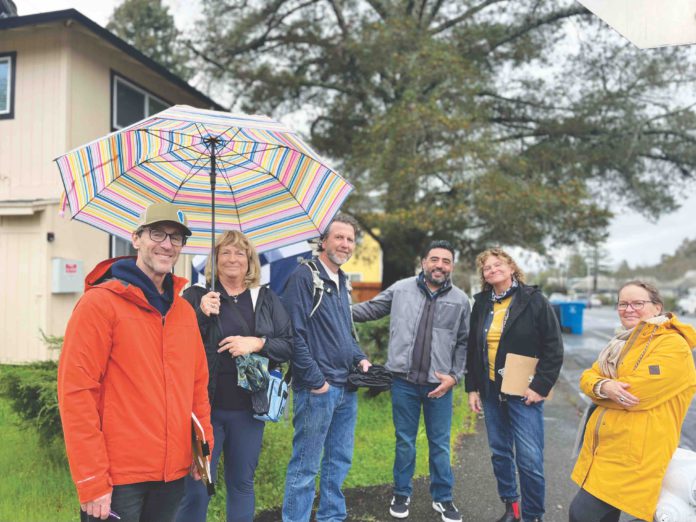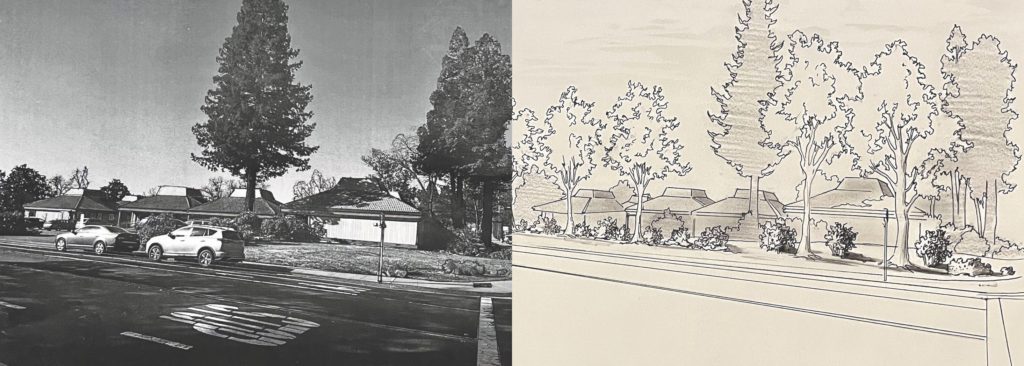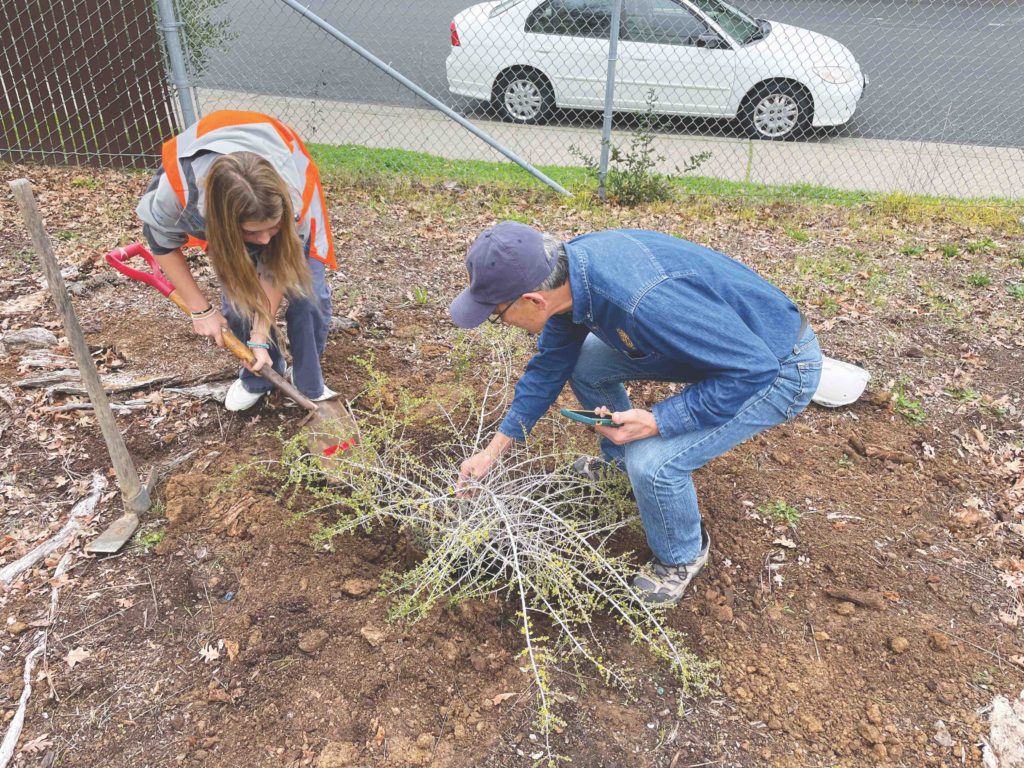
A new, citizen-led initiative in Healdsburg will attempt to plant 500 more trees along city streets—an ambitious endeavor that will involve raising funds, rallying community members to help, mapping spots to plant, getting local landowners on board, dodging underground utility lines, caring for the trees long-term and much more.
The goal is to plant 50 trees along March Avenue by November 2025—a pilot program that would serve as a model for tackling other city streets that “lack shade and are uncomfortably hot during much of the year.” Planting is scheduled to begin this fall along March Avenue, our “neglected east-west corridor,” organizers say.
The group behind this big green dream, “Street Trees for Healdsburg,” is a subset of the larger Climate Action Healdsburg group, which has grown over the past few years into a busy hive of around 30 locals who put their energies and expertise toward environmental problem-solving here in town.
One of Healdsburg’s more progressive former mayors and a current substitute teacher in town, Brigette Mansell, sits at the helm of the street-tree project.
The roster of folks she’s recruited to help advise at this early stage is a who’s-who of local experts in urban planning and environment—including former city planning commissioner Dan Petrik; climate educator Tyra Benoit; former city arborist Matt Thompson; current city parks official Jaime Licea; Healdsburg High School art teacher Linus Lancaster, who’s been planting on campus with help from students; and perhaps Healdsburg’s most famous gardener, Martha Hunt, a native-plant guru by all accounts.
Their group motto? “Stitching community together, one tree at a time.”
The dream is twofold: Improve quality of life in Healdsburg—uniting the town with shadier, more walkable streets—while helping restore balance to the planet. And it all begins on March Avenue.

“That’s not a tourist street, unless they’re going to the hospital,” Mansell says. “It’s the most forgotten street in town.”
Team member Matt Thompson, who worked for decades as the city’s arborist, says that “from the whole greenhouse gas perspective, planting trees is like the low-hanging fruit. It’s the easy, fairly inexpensive way to mitigate some of these problems.”
He adds: “There’s something called ‘urban heat islands’ that are created when you put in sidewalks and parking lots and pathways. The trees help to cool that reflective surface.”
While the tree project doesn’t require city permission, because all the planting will happen on private land, Mansell says she’s been grateful to have the support of city officials so far.
“My understanding is that the trees would be on private property, so the City doesn’t have a formal role in the process right now,” Healdsburg City Manager Jeff Kay says via email. “But we’re definitely supportive of efforts to add trees in this area. I know that our staff has been in contact with this group and has provided some logistical support. We’re also willing to apply for grants on the group’s behalf if a good option is identified.”
Mansell’s vision includes recruiting local school kids who want to steward the trees and make the project their own.
Other Healdsburg community members—especially ones who own or live on streetside land that could potentially host some trees—are likewise invited and encouraged to get involved.
Residents and landowners will be given a “menu” of dozens of native tree species, and will have the option to plant and take care of the trees themselves, or outsource the job to the “Street Trees for Healdsburg” group.

“If more people just did even one or two natives in their yards, it would make a big difference,” says Lancaster, art teacher and environmental activist. “The benefits of planting natives are enormous. Biodiversity, for one thing. As biodiversity collapses, it’s a domino effect—from soil health, to the presence of native plants, to insects, to birds and then to larger species as well. Then, finally, to us.”
With help from the Healdsburg Rotary and various student clubs, Lancaster has planted dozens of native shrubs and trees around the high school campus during the past few months, where permission was simpler to secure than it’s bound to be at the 40-plus private properties along March Avenue.
Lancaster says he was inspired by the California State University, Channel Islands campus while dropping off his daughter at college last August. “It was obvious from walking around that they had made a big effort to plant natives on campus,” he says. “The whole campus was just teeming with monarchs and other butterflies and pollinators.”
Those interested in getting involved or learning more can find the “Street Trees for Healdsburg” booth at Climate Fest in the Healdsburg plaza on Sunday, April 21.








Property owners must be aware that trees cost money to maintain and even more to remove once they are old, sick, or rotten. In my opinion, crepe myrtle trees require the least maintenance. They grow slowly. They have beautiful blossoms at the height of summer.
They should be pruned once a year in the winter.
Yes, crepe myrtyle trees are gorgeous year round and have small leaves that don’t cause too much mess.
No, they do *not* need pruning every winter! Just remove branches that are in the wrong place.
Kathy S: The trees are healthier if you cut off the little dead sprigs in the winter. I’m not talking about taking off limbs. The suckers have to be removed.